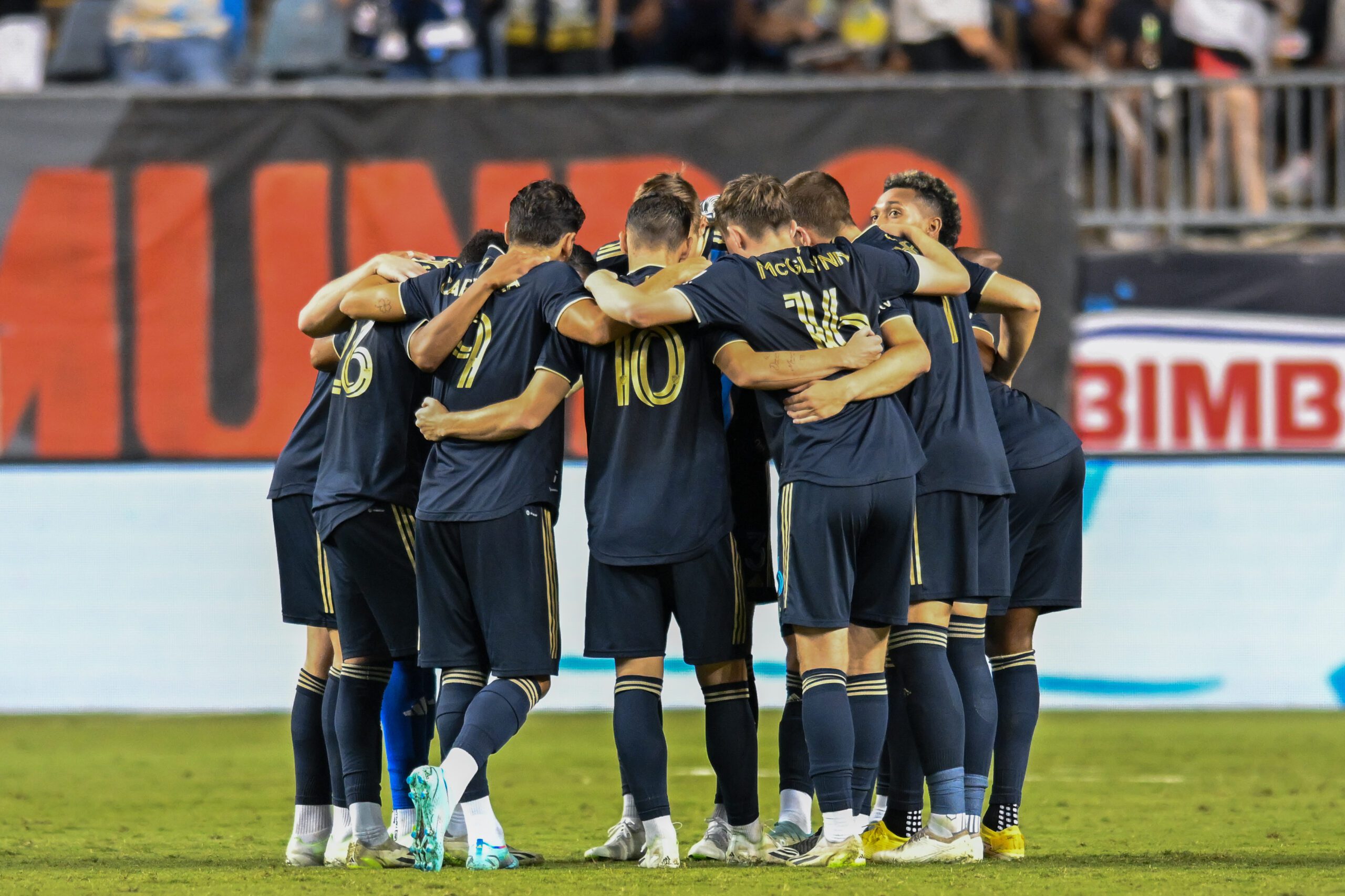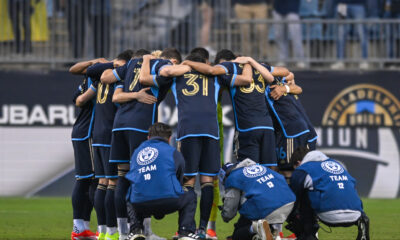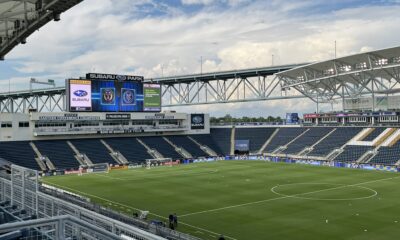Brotherly Game
Does the 3-4-1-2/3-5-2 formation solve the midfield problem for the Union?

For years now, the Union have played their traditional 4-4-2 diamond formation with much success. Long utilized to strengthen the midfield shape and allow for a more cohesive pressing system, the diamond has been the single-most effective tactical decision for the Boys in Blue outside of drafting Andre Blake.
With Jose Martinez thriving at the six, Alejandro Bedoya free from the bastard wing position, and Leon Flach emerging as the ultimate workhorse, the base of the diamond has been ruthless, grinding down opponents week after week. Add Daniel Gazdag at the top, and the Union midfield built an extra layer of defense to complement one of the league’s best backlines and the league’s best goalkeeper. With this defensive mindset, the Union have been the most difficult team in MLS to break down, which has led to fewer goals conceded (114) than any club over the past four seasons (prior to Charlotte game).
Behind the Union:
Nashville- 123
Seattle – 132
NY Red Bulls- 138
NYCFC – 138
Dallas- 148
New England- 150
Minnesota- 155
LAFC- 160
Colorado-160
Defensively, the Union diamond hasn’t been the same since the start of the season. The press has been late, the rhythm disjointed, and the hold on the game less controlling. At times, Union coach Jim Curtin has used a higher press, which has given the Union more bite. But the Union opponents have prepared well. Some have shifted tactics to make it harder for the Union to establish their press and allow the outside backs to progress forward. Cincinnati’s Pat Noonan has a firm grasp of how to match the Union by pushing wingbacks into the midfield to neutralize the outsides, Sporting Kansas City coach Peter Vermes alluded to moving the Union diamond across the field to expose the weak side. and D.C. United’s Wayne Rooney twice at Subaru Park forced the Union to hold more of the ball while avoiding their attempts at a press.
Even though the Union are fine with losing the possession battle, they haven’t controlled as many games defensively as they did a season ago. Enter the 3-4-1-2. A slight shift from the diamond, the 3-4-1-2 uses Jakob Glesnes, Jack Elliott, and mostly Damion Lowe as the featured backs, all beasts in the air and good on the ball, which pushes Mbazio/Nathan Harriel and Kai Wagner up the field on the wings to re-establish the Union’s hold in midfield. For the most part, it’s worked.
The Union’s first time playing with a back 3 came against FC Cincinnati on April 8, a direct counter to Noonan’s attempt to avoid the press and limit the Union outside backs free reign of the wings by playing his own 3-4-1-2. But in that game, while the Union juggled legs of the CCL quarterfinals, they played more like a 5-3-2 with Matt Real and Olivier Mbaizo holding back much more than the outside backs have done since the Colorado game and beyond.
Including the Colorado game (and prior to Charlotte), the Union have appeared with 3 backs 14 times, and 7 of the last 10. They are 8-3-3 overall with a back 3 but 3-4-3 in their last 10 with the formation. Their two road losses happened at San Jose and Atlanta, and the lone home loss came in the Inter Miami debacle. Compared to the back 3, the Union are 12-6-8 when playing the 4-4-2 diamond and are 6-2-2 in their 10 games in that system. The comfort from playing their regular formation has led to greater continuity, a big reason for the Union’s consistency in recent years.
Against Cincinnati last Saturday, the Union played a back 3 to mixed results. The outside backs neutralized each other, and Cincy still managed a few dangerous chances despite the Union taking a two-goal lead by halftime. In the second half, Cincinnati gained control of the midfield and found gaps between the center backs, exposing the wider back 3 positioning with pace to climb back and tie the game at 2-2.
With injuries to Bedoya and Flach and an incredible number of minutes played this season, the back 3 has allowed Lowe to have a starting place in the lineup and has given Jack McGlynn time to grow with Jose Martinez by his side. The emergence of Jesus Bueno in Leagues Cup has at least given the Union another midfielder capable of maintaining the high intensity.
The 3-4-1-2 may not be the answer to most opponents going forward as Union coach Jim Curtin has said many times the diamond remains his preferred formation. But some games, namely Cincinnati, present a matchup where the back 3 formation may indeed be a stronger solution.
Having another center back capable of defending the box and dishing out crunching tackles has been a plus. By deploying two sixes, the formation has also allowed Jose Martinez to move forward and create closer to goal, which led to an uptick in his goals from previous seasons, including his bomb Saturday night. The front three remain the same, free to operate in the final third with no disruptions, and are not far off from recapturing their late-season magic from 2022. Wagner, Mbaizo, and Harriel have also been given more freedom to attack with the extra coverage behind them.
The formation has caused some drawbacks. The wider positioning led to the outside center backs moving further apart, so giving the ball away, as seen against the Red Bulls, Miami, and Cincinnati, has led to footraces the Union don’t want to engage in. The familiarity of the diamond over the years also created a greater sense of awareness on the field among the players. The Union have dominated teams because their organization and rhythm has been nearly automatic. But it’s clear they’re still adjusting to the movements and coverages in the 3 back system. So while the 4-4-2 diamond will continue to be the Union’s default going forward, occasionally, barring injuries, teams with greater attacking threats, or road midweeks, expect to see the 3-4-1-2 stick around.


















